Recent Articles
Popular Makes
Body Types
2021 Toyota Highlander Hybrid vs. 2021 Kia Sorento Hybrid
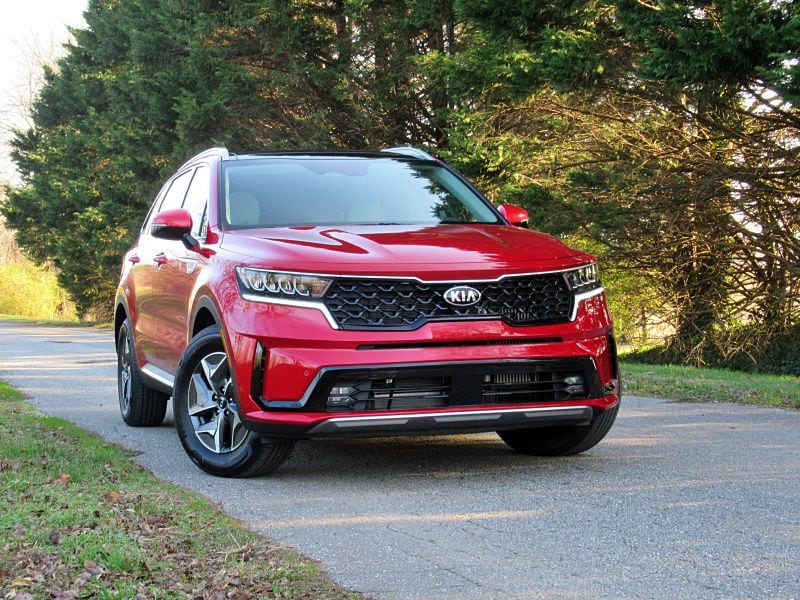
2021 Kia Sorento Hybrid ・ Photo by Brady Holt
Toyota is known for popularizing the hybrid with its iconic Prius. But it’s no less significant for the diversity of gas-electric models it has offered throughout its lineup. While the first and most famous Toyota hybrid was the 2000 Prius, its second was the 2006 Highlander Hybrid — a three-row mid-size crossover SUV.
All these years later, the 2021 Toyota Highlander Hybrid is more fuel-efficient than ever, rated for up to 36 mpg. And it still has few rivals among relatively affordable, extra-efficient SUVs. But this year, there’s an all-new 2021 Kia Sorento Hybrid with even better EPA ratings and an even lower price. Is the Highlander Hybrid still the best way to save gas while carrying the whole family? Keep reading as we discuss how the two hybrids compare in a variety of categories, and which one is our top pick overall.
Pricing
The 2021 Toyota Highlander Hybrid is priced from $38,410, which is a $4,000 premium over the non-hybrid Highlander (though just $1,400 more than the equivalent trim level). That’s pretty steep for a mid-size crossover from a non-luxury brand. And our test vehicle, in the top Platinum trim level, soared to $51,808.
The 2021 Kia Sorento Hybrid is much more palatable. Though at $33,950, it also costs much more than the base non-hybrid Sorento and costs $2,000 more even than a comparably equipped model, that’s well below the Toyota. What’s more, even the base Sorento Hybrid S model provides synthetic leather upholstery and heated front seats as standard equipment. To get those on the Highlander Hybrid, you step up from the base LE to the mid-level XLE, which starts at $41,210. Unlike the Sorento Hybrid, the Highlander Hybrid does have adaptive cruise control and a power liftgate even on its base model, but even a fully loaded Sorento Hybrid still costs less than a base Highlander Hybrid.
Kia Sorento Hybrid
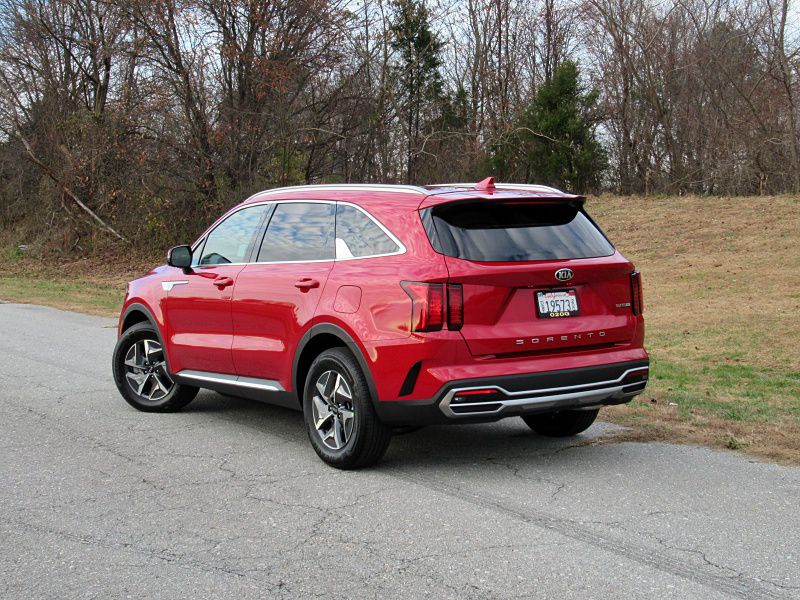
Photo by Brady Holt
Features
While the Sorento Hybrid is a great bargain if it has the features you want, you’re out of luck if you want a fully loaded model. While the gas-only Sorento is offered in a wide variety of trim levels, the Sorento Hybrid comes in just two, and they have pretty similar equipment.
For its $3,000 premium over the S, the Sorento Hybrid EX ($36,590) adds a panoramic moonroof, a power liftgate, adaptive cruise control, bicyclist- and cross-traffic-detection capabilities for its automatic emergency braking system, and a wireless smartphone charger. That’s not a bad set of features, but it’s much more limiting than the Highlander Hybrid. Features exclusive to the Toyota include genuine leather, ventilated front seats, heated second-row seats, a premium sound system, a surround-view parking camera, and rain-sensing windshield wipers. Even basics like a second-row bench seat (rather than captain’s chairs) and all-wheel drive are unavailable on the Sorento Hybrid.
Toyota Highlander Hybrid
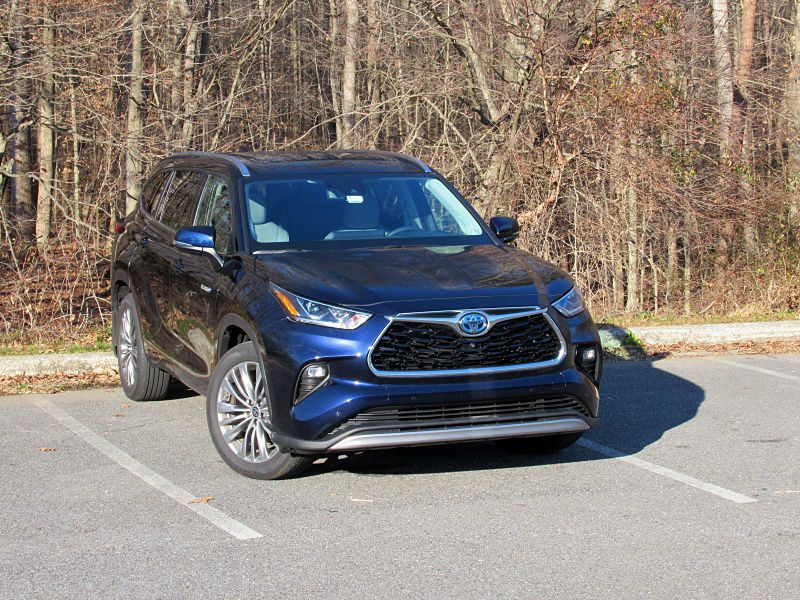
Photo by Brady Holt
Exterior Design
The Highlander Hybrid is 5.5 inches longer, 1.2 inches wider, and 1.4 inches taller than the Sorento Hybrid. And the size difference looks even greater in person.
The Sorento Hybrid’s crisp, clean lines and sharp creases make it look slim and trim. There are a couple of unusual details that add some visual flair — a chrome wave on each side window behind the rear door, and two-part taillights with a vertical gap down the middle — and the grille and headlights are intricately detailed. Still, this isn’t a daring design overall despite being brand-new this year, and our primary impression is that it looks small and unintimidating. In contrast, the Highlander Hybrid has a high, vertical front end with high, aggressively squinting headlights and taillights. The body more rounded-off than the Sorento Hybrid, though, and a curved bulge over the Highlander’s rear fender is a design cue borrowed from the Toyota Supra sports car. Both SUVs are nearly indistinguishable from their gas-only counterparts. To our eyes, the Sorento is more cohesively styled than the Highlander, but also more conservative. We won’t declare a winner based on an aesthetic preference between those two design approaches.
Tie
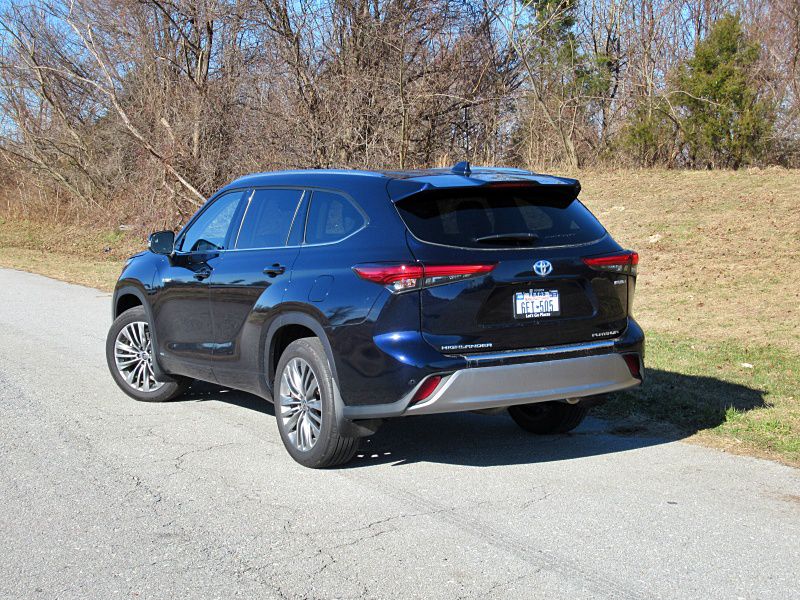
Photo by Brady Holt
Interior Design
As with their exteriors, the Sorento Hybrid is clean and simple while the Highlander Hybrid works harder to avoid being dull — at the risk of being busy. The Sorento Hybrid has a blocky, rugged-looking cabin with simple lines, materials that feel solid but not extra-plush, and generally user-friendly ergonomics except for some unnecessarily fussy touch-sensitive climate controls. Every model uses an 8-inch infotainment touchscreen with simple but plain graphics.
The Highlander Hybrid takes more of a luxury vibe. In addition to its available leather upholstery and generously padded dashboard and door panels, it’s available with a big 12.3-touchscreen to replace its standard 8-inch unit. It’s not the world’s best system, but the graphics are brighter and more cheerful than the dark Kia’s, and it’s easy to use. Toyota also carves out useful storage cubbies on the dashboard. Not everyone will love all the different lines flowing here and there on the Highlander Hybrid’s dashboard, but it’s definitely a richer and higher-tech cabin than the plainer Sorento Hybrid’s.
Toyota Highlander Hybrid
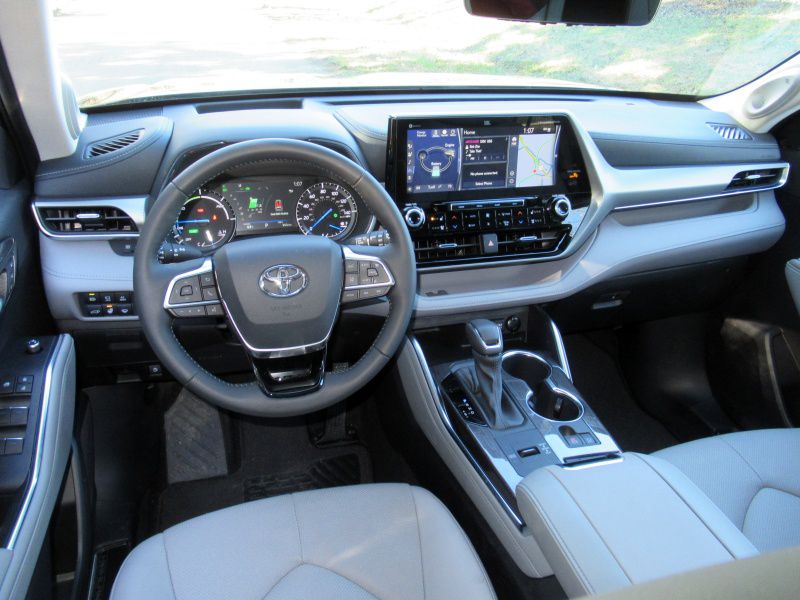
Photo by Brady Holt
Interior Space
The Highlander Hybrid isn’t especially roomy for a three-row crossover. There’s minimal cargo space behind the third-row seat (16 cubic feet), and the third row has limited legroom even if you’ve slid up the fore-aft-adjustable second row. The first two rows are comfortable, and cargo space is class-competitive when you fold them down: 48.4 cubic feet behind the second row and 84.3 cubic feet behind the front seats.
The Sorento Hybrid also provides comfortable front and second-row seats, along with a usable but pinched third row. But while the Highlander Hybrid can seat either seat seven passengers with our test car’s second-row captain’s chairs or eight passengers with the second-row bench seat, every Sorento Hybrid seats a maximum of six. Its cargo space is also tighter than the Toyota’s: 12.6 cubic feet behind the third row, 38.5 cubic feet with the third row folded, 75.5 cubic feet behind the front seats. Also, the Highlander Hybrid is rated to tow up to 3,500 lbs; while that’s not a lot for a mid-size crossover, it trounces the Sorento Hybrid’s 2,000 lbs.
Toyota Highlander Hybrid
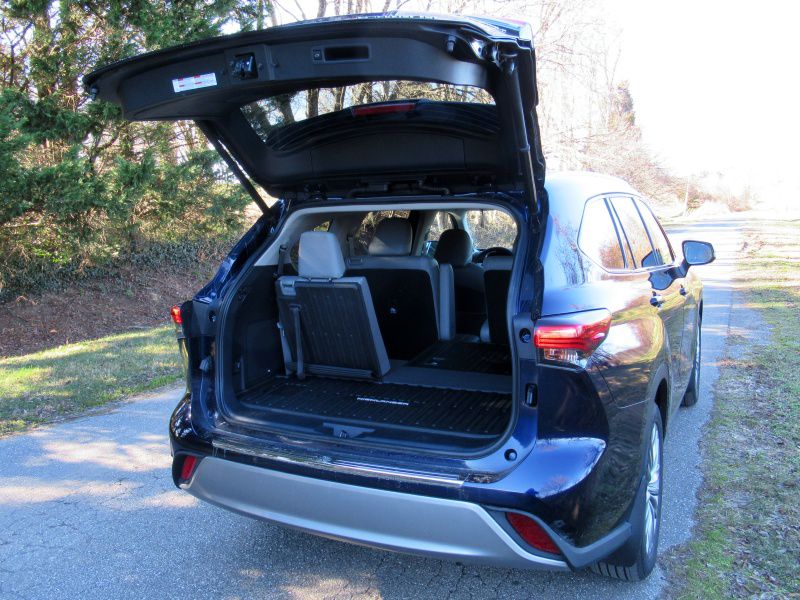
Photo by Brady Holt
Driving Experience
The Highlander Hybrid provides a pleasant but humdrum driving experience. The latest generation, introduced as a 2020 model, swapped out earlier generations’ powerful V6 engine a 2.5-liter four-cylinder. It’s paired with two electric motors for a total output of 243 horsepower and a continuously variable automatic transmission. A family car doesn’t necessarily have to be extra-quick or extra-hushed, but if you’ve owned a Highlander Hybrid in the past, you’ll notice it’s slower and noisier than before. The vehicle rides smoothly and handles with decent agility, but hit a bump and it shivers rather than taking it in stride.
The Sorento Hybrid feels more solid and composed. Its steering is firmer and more responsive, and it’s agile while also delivering a more sophisticated ride — firmer and more controlled than the Highlander Hybrid’s without being any less comfortable. And while the Kia has a little less horsepower, 227 hp, it’s also several hundred pounds lighter. Its 1.6-liter turbocharged four-cylinder gas engine, electric motor, and six-speed automatic transmission work together to deliver peppier, nicer-sounding acceleration.
Kia Sorento Hybrid
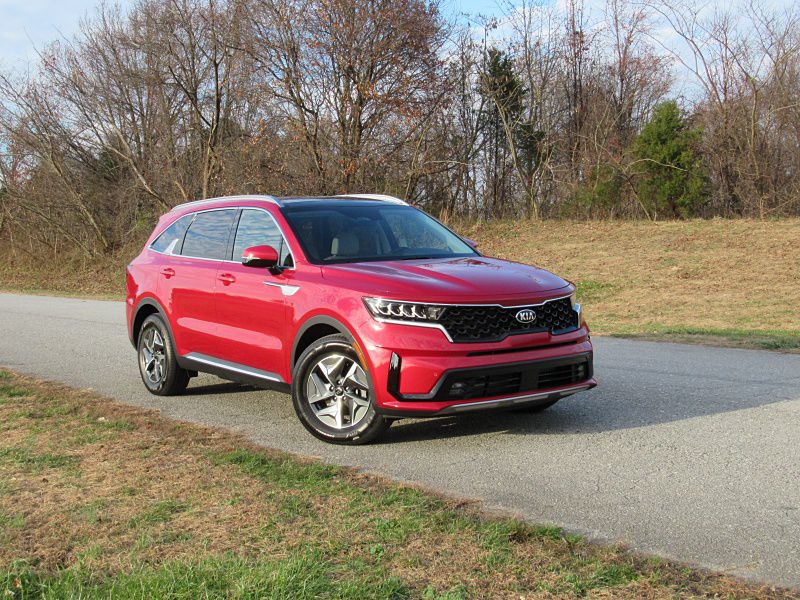
Photo by Brady Holt
Fuel Economy
In EPA testing, the 2021 Toyota Highlander Hybrid manages up to 36 mpg in the city and 35 mpg on the highway, slipping by up to 1 mpg with certain trim levels. That’s a whopping improvement from the previous generation’s 30 mpg in the city and 28 mpg on the highway. But it’s still less than the new 2021 Kia Sorento Hybrid, which manages 39 mpg in the city and 35 mpg on the highway.
In our hands, the Sorento Hybrid achieved only around 30 mpg when cruising on the freeway (where its electric motor helps out less than at lower speeds), but it trounced the EPA estimate when cruising at lower speeds and stop-and-go conditions. We saw 38 mpg overall during our test. The Highlander Hybrid, meanwhile, did slightly better on the freeway. And like the Sorento Hybrid, it willingly stayed in fully electric mode (using no gasoline) when driven gently at speeds below 20 mph. However, the Sorento proved more impressive in the middle ground of suburban errand-running. In all, we averaged 32 mpg in the Highlander Hybrid — excellent by any metric for a three-row SUV except in comparison with the Sorento Hybrid.
Kia Sorento Hybrid

Photo by Brady Holt
Safety
Both the Sorento Hybrid and the Highlander Hybrid should be very safe vehicles. The Toyota wins this category because it has already proven it. It earned five out of five stars in crash testing from the National Highway Traffic Safety Administration, and the highest honor of Top Safety Pick+ from the Insurance Institute for Highway Safety. The Sorento hasn’t yet been tested by either group, though last year’s Sorento performed well.
These SUVs both come with a long list of standard safety features, including automatic emergency braking, lane-keep assist, and blind-spot monitoring. However, only the Highlander Hybrid comes standard with adaptive cruise control or offers a surround-view parking camera. The Sorento Hybrid does have a more sophisticated automatic emergency braking system on the EX model, which can detect bicyclists and traffic approaching on a cross street. Still, the Toyota’s demonstrated crash performance is a bigger advantage.
Toyota Highlander Hybrid
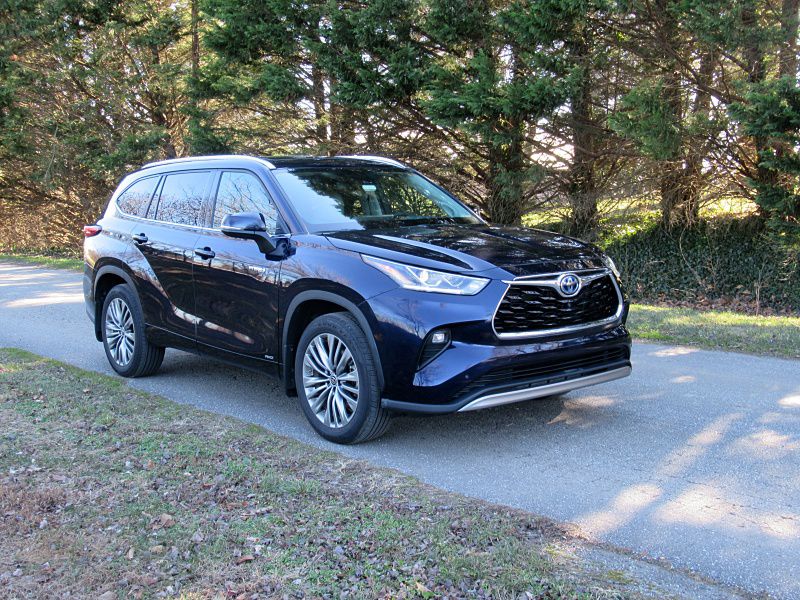
Photo by Brady Holt
Final Thoughts
If you want a fuel-sipping SUV with the most possible interior space, the 2021 Toyota Highlander Hybrid won’t disappoint. It’s safe, comfortable, generally pleasant to drive, and filled with high-end features. Plus, especially at lower speeds, it uses less gasoline than most economy sedans.
But we’re even more impressed with the 2021 Kia Sorento Hybrid. True, it’s not as roomy as the Highlander, and its lack of all-wheel drive and some other features will be a dealbreaker for many buyers. But it’s nicer to drive, it gets better gas mileage, and it enjoys a massive price advantage. You won’t feel like you’re settling for the Highlander Hybrid if you need its bit of extra space and capability, but we’d check out this new Kia first.
Kia Sorento Hybrid

Photo by Brady Holt